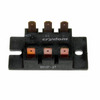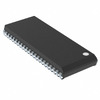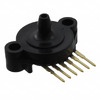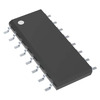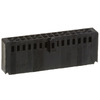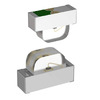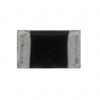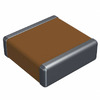ESP-01 Wi-Fi Module Guide: Pinout, Features, and Comparison with ESP8266
The ESP-01 Wi-Fi module is a small but powerful tool that makes it easy to connect microcontrollers to Wi-Fi. In this article, we’ll take a closer look at what makes the ESP-01 so useful. We’ll cover its design, how its pins work, how to program it, and why it’s such a great fit for the fast-growing world of Internet of Things (IoT) devices.Catalog

Overview of the ESP-01 Wi-Fi Module
The ESP-01 Wi-Fi module is a compact and efficient tool, favored for its standalone design that comes with an integrated TCP/IP stack. This characteristic allows for effortless Wi-Fi network integration with various microcontrollers. The module's straightforwardness and adaptability have led to its extensive application across diverse domains. The ESP-01 finds its place in settings ranging from cozy home automation to intricate industrial monitoring systems.
Pin Layout of ESP-01
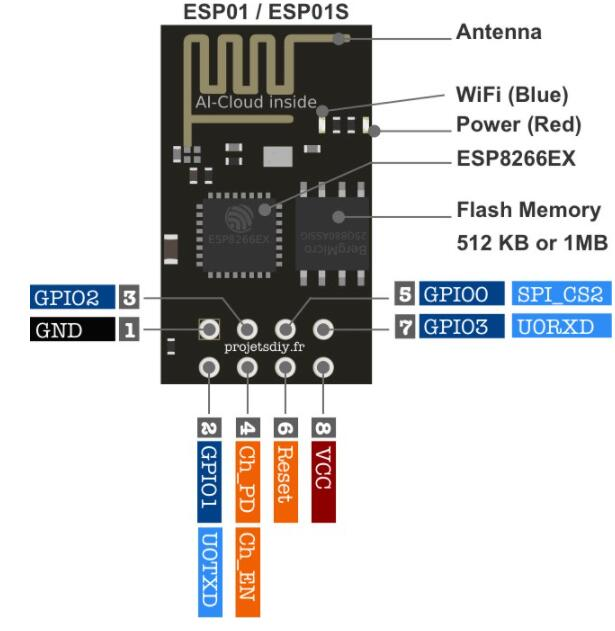
ESP-01 Symbol, Footprint , and CAD Model
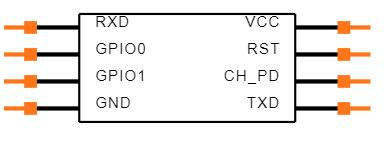


ESP-01 Technical Specifications
|
Type |
Parameter |
|
Factory Lead Time |
5 Weeks |
|
Series |
STM32F4 |
|
Moisture Sensitivity Level (MSL) |
1 (Unlimited) |
|
Core Processor |
ARM® Cortex®-M4 |
|
Contents |
Board(s) |
|
Platform |
Espruino Pico |
|
Mounting Type |
Fixed |
|
Part Status |
Active |
|
Type |
MCU 32-Bit |
|
Utilized IC / Part |
STM32F401 |
|
Board Type |
Evaluation Platform |
Features of the ESP-01
• Compact Wi-Fi Module: The ESP-01 is ideal for diverse IoT solutions.
• Standard Compliance: Adheres to 802.11 b/g/n, enhancing broadband connectivity.
• Integrated MCU: Allows efficient task performance without needing an external processor.
• ADC Feature: Enables seamless integration of sensors for versatile data acquisition.
• Transceiver Switch: Boosts efficiency by harmonizing signal transmission and reception.
• Embedded TCP/IP Stack: Facilitates easy network connections for complex multi-node networks.
• Antenna Diversity: Refines signal reception by choosing the optimal antenna path, maintaining connectivity in fluctuating signal areas.
• Operational Modes: Offers station mode, soft access point mode, and dual mode, supporting various platforms like Android and iOS.
Integrating the ESP-01 as a Wi-Fi Interface
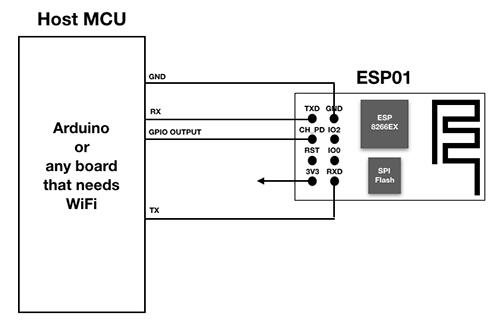
Unlocking the full potential of the ESP-01 module involves its deployment as an independent Wi-Fi interface, adeptly managing wireless connectivity. This method demonstrates remarkable synergy when coupled with an STM32 Blue Pill microcontroller. The collaboration capitalizes on serial communication, evolving from traditional AT command-based firmware to customized network interface protocols tailored for specific applications.
Utilizing the ESP-01 as a self-contained Wi-Fi interface enhances the efficiency of network operations. Diverting Wi-Fi processing from the primary microcontroller optimizes system performance, ensuring consistent connections even under complex task management. Moving beyond standard AT commands allows you to tailor communication protocols to meet unique project needs. This personalization ensures that data is processed with speed and precision, reducing latency.
While employing the ESP-01 as a dedicated Wi-Fi interface adds refinement to designs, it is need to balance complexity with maintainability. Simplicity in design accords with sustainable development practices, making ongoing support and updates manageable. Notably, some of the most celebrated tech products maintain focused designs that emphasize simplicity while preserving functionality, a sophisticated approach worth following. Transforming the ESP-01 into a comprehensive Wi-Fi interface offers expansive possibilities across a variety of sectors, blending innovation with practical application.
Comparison Between ESP-01 and ESP-01S

LED Variations
A notable aspect distinguishing ESP-01 from ESP-01S is their LED configurations. ESP-01 is designed with two LEDs, which play a dual role by indicating both power and serial communication status. This setup offers an extra layer of support during debugging, particularly in scenarios where visual signals can simplify intricate challenges. In contrast, ESP-01S adopts a minimalist design with a single LED. This decision streamlines the focus on core function indication and may lead to reduced power usage, an appealing trait in situations where conserving resources is a priority for optimal performance.
Pull-up Resistor Arrangements
The arrangement of pull-up resistors marks another area of difference. With ESP-01, external pull-up resistors are needed for certain GPIO pins, potentially creating a more complex setup while providing the flexibility to tailor the system for diverse project needs. Adding these resistors externally can be beneficial in setups demanding specific adaptations or varied pin configurations. Conversely, ESP-01S features integrated pull-up resistors, which simplify the setup and lessen the requirement for additional parts, making it advantageous in environments where space is limited and straightforward operations are valued.
Application-Based Practicalities
The choice between ESP-01 and ESP-01S may hinge on firsthand experiences and the specific demands of a project. Those who cherish customization and meticulous control might gravitate towards ESP-01 for its adaptability, despite its setup intricacies. In contrast, initiatives that require swift implementation and friendliness may find ESP-01S more appealing due to its inherent simplicity. Selecting between these two modules often requires balancing the streamlined nature of ESP-01S against the adaptable features of ESP-01, each catering to distinct requirements within the dynamic landscape of IoT applications.
The table below compares two ESP8266EX microcontroller models: the ESP-01 and the ESP-01S. It outlines specifications including flash memory capacity, color, and distinctive features.
|
Model |
Description |
Flash Memory |
Color |
Mention |
Note |
|
ESP-01 |
esp01 esp-01 esp8266ex |
512 MB |
Blue |
AI Cloud Inside |
The red (Power) and blue (WiFi) LEDs are placed next to
the antenna engraved on the PCB |
|
ESP-01S |
esp01s esp-01s esp8266ex |
1 MB |
Black |
S Series |
Comparison Between ESP-01 and ESP8266
Memory Capacity
The ESP-01 and ESP8266, though sharing a common core, demonstrate notable disparities in their flash memory capacities. This variance brings about distinctions in how each module can store data and the complexity of applications they can support. Modules with expansive flash memory can host extensive code and larger libraries, opening doors to advanced functionalities.
Diverse Application Scenarios
The distinct memory capacities of the ESP-01 and ESP8266 inform a spectrum of application scenarios, each tailored to specific demands. ESP-01, with fewer memory resources, is frequently chosen for straightforward endeavors such as basic data transfers and minimalistic IoT solutions. Conversely, the ESP8266, equipped with more memory, excels in intricate settings like home automation and time monitoring where rigorous data management is required.
When deciding between ESP-01 and ESP8266, elements such as project magnitude, budgetary limitations, and technical requirements influence the choice. While both provide Wi-Fi capabilities, projects with high-performance expectations are likely to thrive with the enhanced memory of the ESP8266. In contrast, cost-effective endeavors without complex processing needs might favor the ESP-01.
ESP-01 Manufacturer Information
Pimoroni was brought into existence by the imaginative team behind the renowned Raspberry Pi logo and has channeled its energy into crafting technology products designed at their core. Their commitment to making electronics more approachable has sparked international growth, reflecting a dedication to bringing technology closer to people worldwide. Pimoroni’s product design ethos revolves around open access. This approach is evident in their creation of intuitive interfaces and detailed guides, which focus on applications rather than abstract theories. Pimoroni upholds a strong dedication to educational progress. By collaborating with educational bodies and offering STEM resources. As the tech world rapidly changes, Pimoroni remains on the cutting edge by foreseeing future trends and innovating in response.
About us
ALLELCO LIMITED
Read more
Quick inquiry
Please send an inquiry, we will respond immediately.
Frequently Asked Questions [FAQ]
1. How does the ESP-01 interface with networks?
The ESP-01 module interfaces with local and internet networks via its GPIO pins, effortlessly connecting with devices like sensors or home automation systems. This process includes both sending and receiving data packets. Using platforms such as Arduino enriches its programmability, inviting customization for specific needs. From practical usage, it is apparent that tailoring network settings and adeptly managing data buffers can elevate response times, enhancing satisfaction with improved device interaction.
2. What is the role of the ESP-01?
The ESP-01 facilitates remote control of peripherals, including LEDs and relays, over the internet. It is often programmed through serial interfaces using tools like Arduino, expanding its capacity in IoT applications ranging from home automation to industrial control systems. Collaboration and the exchange of open-source libraries further augment its functionalities. Imagining how it adapts to scenarios reveals its potential in refining energy consumption while maintaining dependable device governance.
3. Can the ESP-01 operate without a router?
Indeed, the ESP-01 can function without a router by switching to Access Point (AP) mode, enabling direct connection from a PC or smartphone for command exchange. This feature proves beneficial, especially in field setups where traditional Wi-Fi infrastructure is sparse. Applying this approach in specific contexts can streamline device management, addressing situations where conventional network access is constrained.
4. How to connect the ESP-01 to a Wi-Fi network?
Start by joining the "ESP8266 Access Point" network. Afterward, execute a series of terminal commands for network integration and test responses by pinging the module. Ensuring firmware compatibility and verifying network credentials can avert connection difficulties. Repeated testing and recognizing the subtleties of diverse network conditions to achieve consistent connection stability and reliability.
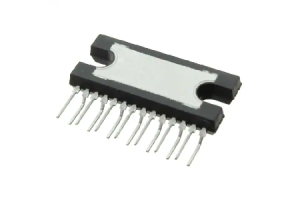
LA4440 Power Amplifier: Pinout, Circuit Diagram, and Specifications
on November 16th

A Complete Guide to SN74HC14N
on November 15th
Popular Posts
-

What is GND in the circuit?
on January 1th 3291
-

RJ-45 Connector Guide: RJ-45 Connector Color Codes, Wiring Schemes, R-J45 Applications, RJ-45 Datasheets
on January 1th 2826
-

Understanding Power Supply Voltages in Electronics VCC, VDD, VEE, VSS, and GND
on November 20th 2687
-

Fiber Connector Types: SC Vs LC And LC Vs MTP
on January 1th 2271
-

Comparison Between DB9 and RS232
on January 1th 1891
-

What Is An LR44 Battery?
Electricity, that ubiquitous force, quietly permeates every aspect of our daily lives, from trivial gadgets to life-threatening medical equipment, it plays a silent role. However, truly grasping this energy, especially how to store and efficiently output it, is no easy task. It is against this background that this article will focus on a type of coin cell battery that may seem insignificant on the...on January 1th 1849
-

What Is RF and Why Do We Use It?
Radio Frequency (RF) technology is a key part of modern wireless communication, enabling data transmission over long distances without physical connections. This article delves into the basics of RF, explaining how electromagnetic radiation (EMR) makes RF communication possible. We will explore the principles of EMR, the creation and control of RF signals, and their wide-ranging uses. The article ...on January 1th 1818
-

Understanding the Fundamentals:Inductance Resistance, andCapacitance
In the intricate dance of electrical engineering, a trio of fundamental elements takes center stage: inductance, resistance, and capacitance. Each bears unique traits that dictate the dynamic rhythms of electronic circuits. Here, we embark on a journey to decipher the complexities of these components, to uncover their distinct roles and practical uses within the vast electrical orchestra. Inductan...on January 1th 1817
-

CR2430 Battery Comprehensive Guide: Specifications, Applications and Comparison to CR2032 Batteries
What is CR2430 battery ?Benefits of CR2430 BatteriesNormCR2430 Battery ApplicationsCR2430 EquivalentCR2430 VS CR2032Battery CR2430 SizeWhat to look for when buying the CR2430 and equivalentsData Sheet PDFFrequently Asked Questions Batteries are the heart of small electronic devices. Among the many types available, coin cells play a crucial role, commonly found in calculators, remote controls, and ...on January 1th 1806
-

Comprehensive guide to hFE in transistors
Transistors are crucial components in modern electronic devices, enabling signal amplification and control. This article delves into the knowledge surrounding hFE, including how to select a transistor's hFE value, how to find hFE, and the gain of different types of transistors. Through our exploration of hFE, we gain a deeper understanding of how transistors work and their role in electronic circu...on November 20th 1796





